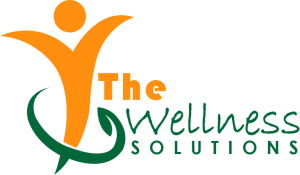In today’s fast-paced work environments, employers are increasingly recognizing the importance of employee well-being. A healthy workforce not only leads to increased productivity but also supports a positive work culture and reduces absenteeism. Providing health tools for employees is one of the best ways to create a workplace that prioritizes well-being. Let’s explore ten tools that can help transform any office into a health-focused environment, benefiting both employees and employers.
- Standing Desks
Long hours of sitting can contribute to a range of health issues, from poor posture to heart disease. Standing desks are a simple yet effective way to reduce these risks. They allow employees to alternate between sitting and standing throughout the day, helping to improve posture, increase energy, and reduce back and neck pain. Offering adjustable standing desks can also enhance focus and productivity, making them a great investment for any workplace. - Walking Pads
For employees who spend long periods at their desks, walking pads can help keep them active. These devices fit under desks, allowing employees to walk while working, promoting better circulation, reducing fatigue, and even boosting mood through the release of endorphins. This simple addition encourages movement and provides health benefits while working on tasks. - Anti-Fatigue Mats
Employees who stand for long periods can experience discomfort in their feet, knees, and hips. Anti-fatigue mats provide cushioned support, reducing strain and fatigue. These mats help employees stay comfortable, prevent long-term joint damage, and improve posture, making them a valuable tool for those working on their feet. - Water Stations
Staying hydrated is key to maintaining energy levels and focus throughout the workday. Water stations in the workplace make it easy for employees to stay hydrated, reducing the risk of dehydration and its associated symptoms like fatigue and headaches. Providing water stations also helps reduce the use of single-use plastic bottles, making it an environmentally-friendly option. - Healthy Food Options
Nutrition plays a significant role in overall well-being. Offering healthy food options in the workplace can improve focus, mood, and energy levels. Stocking kitchens or cafeterias with nutritious snacks like fruits, nuts, and yogurt encourages employees to make healthier choices. Providing free healthy meals is even better, ensuring that employees stay energized and nourished. - Walking Routes
Encouraging employees to take breaks and move during the day is vital. Providing maps of walking routes around the office or nearby areas can inspire employees to get outside and enjoy some fresh air. Walking boosts circulation, reduces stress, and even sparks creativity, leading to improved productivity when they return to their tasks. - Shared Workout Equipment
A mini fitness center within the workplace, with basic equipment like yoga mats, dumbbells, or stability balls, provides employees with a chance to exercise during breaks. Physical activity can reduce stress, improve focus, and boost overall physical health. This simple addition supports employee wellness in a convenient, accessible way. - Meditation Rooms & Rest Spaces
Mental health is just as important as physical health. Having dedicated spaces for meditation or relaxation can provide employees with a quiet escape to recharge. These areas help reduce stress, improve focus, and boost overall well-being, fostering a more balanced and productive work environment. - Health Day Calendars
Creating a wellness calendar that highlights health-related events, challenges, and activities helps keep employees engaged and informed about the importance of health. Celebrating health days, hosting fitness challenges, or promoting local charity runs can encourage employees to actively participate in wellness initiatives. - Wearables
Wearable health devices, such as fitness trackers, can be a great way for employees to monitor their activity levels, sleep patterns, and heart rate. These devices provide real-time feedback, encouraging employees to stay active and make healthier choices. Integrating wearables into wellness programs can enhance employee health and help track progress toward individual health goals.
By providing these health tools, employers can create a wellness-focused environment that supports both physical and mental well-being. These simple yet effective resources not only improve employee satisfaction and health but also lead to greater productivity, reduced absenteeism, and a positive workplace culture.


